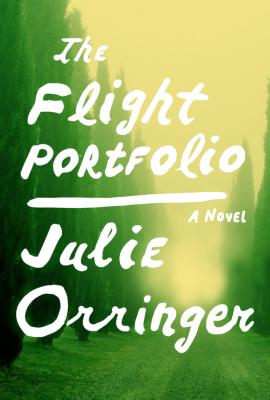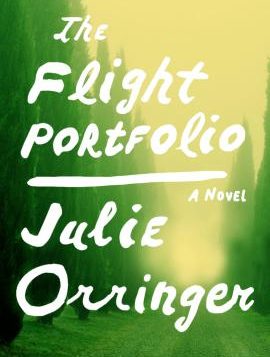 The Flight Portfolio
The Flight Portfolio
by Julie Orringer
Knopf. 562 pages, $28.95
THE FLIGHT PORTFOLIO is a fictionalized account of American Varian Fry’s attempt to aid refugees in Vichy France in 1940, before the U.S. entered World War II. Working against both an increasingly oppressive French regime and American diplomatic indifference (at times outright hostility) to those hunted by the Nazis, Fry manages to get many European artists and intellectuals, as well as their families, out of France and into safer places, including Marc Chagall, Victor Serge, and Heinrich Mann. Meanwhile, he encounters Grant, an old lover from his Harvard days, rekindling the romance while being drawn into the man’s life of intrigue.
The novel captures all the peril that people who tried to help refugees during this time must have encountered. Fry arrives in Marseilles as the on-the-ground leader of the Emergency Rescue Committee, armed with a list of roughly 200 hundred “valuable” people who should be rescued. A classicist by training and a journalist by career, he has no experience in this sort of work and expects to stay a month, but he remains there for about a year. Although he has an ally in the American consulate who does what he can to help, the chief diplomat makes Fry’s work nearly impossible, following the American government’s policy of noninvolvement. Washington even cables an official disavowal of any connection to or cooperation with Fry. French police frequently drag him in for questioning. Before Marshall Petain visits Marseilles, Fry and several hundred other “suspicious” residents are rounded up and detained in various improvised prisons, including a ship. Fry works with gangsters and black marketeers to forge identity and travel documents and to develop escape routes. Even Fry’s own organization lets him down, sending a blowhard journalist and his secretary to replace him. Orringer keeps the tension high, as the situation changes constantly, and what worked one day fails the next.
The novel is filled with real-life famous characters, from Marc Chagall, whom Fry tries to convince to leave at the beginning, to André Gide, who reveals his plan to stay in Vichy and subvert the regime through his writings. The Surrealist artists stay with Fry in his Villa Air Bel, throwing fabulous parties with limited resources and making art. The novel’s title comes from a collection of works by refugee artists created to raise funds and awareness. Reading like a literary thriller, The Flight Portfolio blends fact and fiction to tell a moving, powerful story. Given the charged situation regarding refugees today, it seems an appropriate reminder that a gay man risked everything to help people similarly in distress.
_________________________________________________
Charles Green is a writer based in Annapolis, Maryland.






